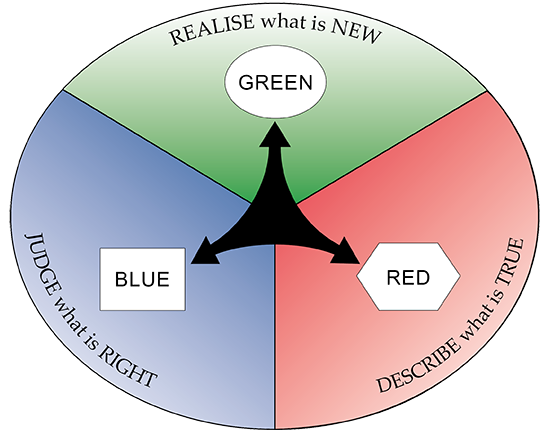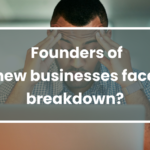Nowadays, ‘disruption’ is a hot topic in business, specifically for those businesses that have a focus on innovative solutions.
What we really mean by disruption is when a business can make such a dramatic and ground-breaking change that it changes their entire industry forever.
When a disruptor changes the course of an industry, competitors are often forced to adapt themselves too, because the disruption causes such a shift that they too must shift in order to survive the change.
In this blog article I’ll be giving you a 4-step process that you can use to set your business up to be your industry’s next disruptor.
Before that though, we need a common and easy language for approaching this, because industry disruption is a highly complex task, with an almost infinite number of variables involved.
Your Language for Disruption
We can leverage Effective Intelligence to meet such a need, because it does exactly that. It provides a simple language for understanding complex tasks, and here it is:

This simple visual is built on 45+ years of research and application of Effective Intelligence, and has been used to disrupt real industries.
It shows with profound simplicity all the possible routes of your thinking, and the thinking of your business, when it is faced with a difficult task like disruption.
At any given point in time, your mind is thinking in one of these three colours: Realising what is new (Green), Describing what is true (Red), or Judging what is right (Blue).
It may seem at first that disruption is therefore a Green task, because we are realising what is new. Although it is true that Green is the driving Colour of the task, it’s actually much more complex than that.
In reality, a difficult task like disruption requires effective thinking in all 3 Colours, as well as sufficient agility to switch between the Colours when necessary.
Most businesses fail to be agile enough to do this, and that’s why they fail to pull off the disruption job successfully.
So now, let’s see the 4-step process for industry disruption! We’ll Colour-code the steps so you can see how the model provides much-needed clarity.
Step 1: Analyse Your Industry
In this first step, you will need to take a detailed and careful look at the current state of your industry.
Firstly, you will need to identify who your competitors are. You may have more competitors than you realise, so a detailed market research effort will be needed. Build a comprehensive list of all your competitors.
Then, you will need to pick up on all the current trends in your market. Make sure that you are aware of all the specifics when it comes to emerging innovations in your industry, as well as any patterns in consumer preferences.
This step is driven by Red thinking, and data gathering is at the heart of that. You will need to conduct customer surveys and interviews to gain the insights you need.
Existing customer feedback is also excellent data, if you have access to that.
Perhaps the most important and most challenging industry analysis you need to make is that of identifying not what is, but rather what is not.
What I mean by this is that you need to look for gaps and discrepancies in your data, because those will point you in the direction of areas that are not served, and needs that are not met. These are your opportunities for innovation.
Step 2: Cultivate Creativity
In order for innovative solutions to emerge from your business so that you can take advantage of the opportunities you find, you need to foster a culture of creativity.
Regardless of the size of your business, you need to enable creative thinking for your people. This is even more important if you are a one-person business, as you must enable it in yourself!
Everyone at your business needs to be happy with embracing change, thinking creatively and taking risks.
This is not easy for everybody, because the majority of the population has a strong preference for Red and Blue thinking, and not Green.
This is important to take on board, because Green thinking is the driver of this step, and if people are not on board, this step will fail.
It’s vital that everyone gains a conscious understanding of this deliberate shift in thinking, because that helps them understand the purpose of the change, which makes it more palatable.
Make sure that you give a generous allocation of time and people to the tasks of identifying opportunities and exploring the weird and wonderful. Gems will emerge!

A great thing to do is to use the Effective Intelligence Thinking-Intentions Profile to find out who the Green thinkers are on your team.
You can then task them with challenging all of the traditional beliefs and assumptions in your industry, and see what they discover.
Step 3: Test Your Findings
Once you have truly developed a culture of creativity, brilliant ideas will emerge naturally from within your business.
Ideas are just ideas though, because the whole point of creativity is that it cannot be constrained by rationality and rigorous tests. That must come later.
So in this step, you need to take the best ideas that have emerged, and cross-reference them with your initial industry analysis that you did with your Red thinking.
You must then decide which of these creative ideas actually stand up to the data, and meet all of the requirements. You will need to reject the vast majority of them, which is completely normal.
This step is driven by Blue thinking, because you need to make high-quality judgments.
As I’m sure you already know, making choices can be a very complex and difficult process, not just in business but in life in general.
Step 4: Agile Execution
This last step is in fact multi-Coloured, because of its agility. You will need to jump around all three Colours in a continuous process.
So what is Agile Execution anyway? It’s a broadly used term so you have probably heard of it. Although not a direct term of ours, it’s very relevant in Effective Intelligence.
Agile Execution is a constant process that you can use to implement your business ideas to create disruption in your industry.
Execution means taking your creative ideas and moving them into innovation, which means successful placement in the market. If you pull it off, disruption is the result.
And this execution needs to be agile because you will need to always be flexible and responsive to all of the external forces that exist in your market.
Your business also needs to be internally flexible and responsive when it comes to using the thinking model.
The quicker your business can adapt and move between the thinking Colours, the more agile your execution becomes and the more likely you are to be successful at disrupting your industry.
Effective Intelligence is built on 45+ years of creative, innovative and disruptive thinking. Check out our other blogs in the Creativity and Innovation categories for more game-changing insights!








